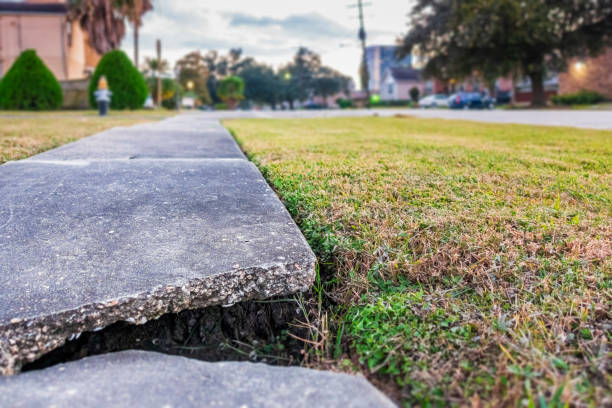How to Repair Cracks on Concrete?
by siteadmin

Cracked surfaces in concrete can be a tripping risk and reduce the value of your home. However, they are easy to fix and can be done quickly.
Clean the crack first by wiping off any debris or brushing it. Then, prepare the surface for resealing it by applying a layer or bonding glue.
Remove Debris
Concrete is strong and resilient but still susceptible to ground shifting, freezing and thawing cycles which cause it to crack. But cracks do not have to ruin the appearance or value of your home. You can repair concrete cracks with a little bit of effort and prevent them from spreading.
Use a wirebrush first to remove any loose concrete or debris. Then, either use a powerwasher or shop vacuum to drain the standing water. Be sure that the cracks are completely dried before moving on to the next step.
Step two is to break down any old concrete around the crack to expose a new surface that can bond with the existing concrete to prevent future cracks. This will help the concrete to adhere more effectively with existing slabs.
Fill Crack
Hairline cracks don't usually indicate structural significance, but larger ones may indicate a problem which needs to be addressed right away. Concrete cracks that are left unattended may lead to further deterioration or costly repairs.
Before you begin any crack repairs, clean the area of loose debris with a chisel. Use concrete patching material to remove it. Moreover, cracks need to be wide enough for adequate drainage.
Mix crack repair products according to the manufacturer's instructions. Apply concrete crack filler by trowel and work it deeply into cracks. Level it with surrounding concrete. Please check the product labels for specifics. Otherwise, cover the area repaired with plastic to prevent moisture intrusion.
Seal Crack
Concrete surfaces that are cracked can be repaired with a variety of products. The most common is epoxy or latex, which can either be injected into the crack directly or poured. It is essential to remove all dirt, gravel, debris and dirt before sealing the area with these products.
It is best to widen the cracked area with a chisel before applying the material. This will provide a larger surface for the repair and make it permanent. Once the crack has been cleaned and repaired, it's now time to apply your solution.
Avoid using cement for crack repair as it may not adhere well to hardened or cured concrete and may delaminate, or lift over time. Moreover, commercial products such as hydraulic concrete may not accept the paint well and could shrink with time. Use concrete or latex repair solutions (check Amazon) that are specifically formulated for sealing cracks and curing to appropriate strength.
Clean up
Even with the best care, cracks in concrete can develop over time. These cracks, if not repaired, can spread and cause serious structural damage to concrete. Most cracks can easily be repaired using quick fixes.
Band-aids are often made by mixing polymer-modified products with cement and rubbing them over cracks temporarily. These treatments may not be a permanent solution, but they can work if the cracks are due to natural concrete maturation.
Before applying crack repair products, clean the surface using a wirebrush or broom. Vacuum any dust or grit. Before filling the crack, wet the surface according to the instructions on the label. Then use a trowel to fill it and smooth with another trowel. Allow to cure for 24 hours before sealing.
Foundation Repair Lexington KY
https://www.foundationrepairlexingtonky.com/
Cracked surfaces in concrete can be a tripping risk and reduce the value of your home. However, they are easy to fix and can be done quickly. Clean the crack first by wiping off any debris or brushing it. Then, prepare the surface for resealing it by applying a layer or bonding glue. Remove Debris…
Recent Posts
- Collierville Moving Company: Your Trusted Local Movers in Collierville, TN
- Leading the Charge in Louisville’s Junk Removal and Demolition Services
- Exploring the Drawbacks of Duct Cleaning: Insights from Air Vent Cleaning Charlotte
- Expert Cleaners Lexington: Elevating Vacation Rental Experiences Through Professional Cleaning Services
- Expert Cleaners Lexington: Elevating Vacation Rental Experiences Through Professional Cleaning Services
